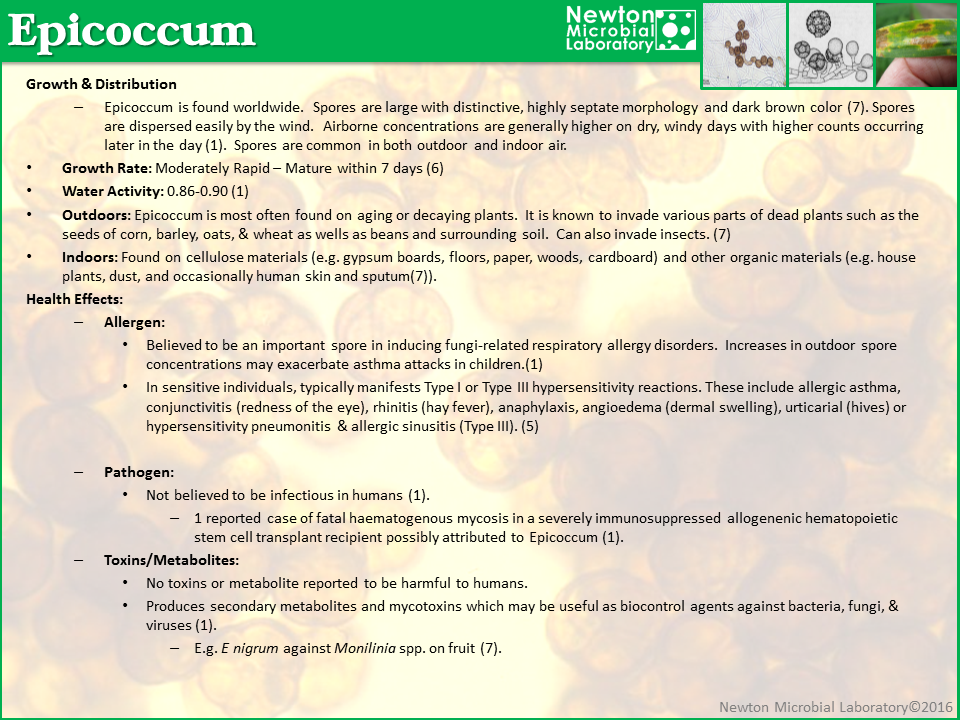Epicoccum
Growth & Distribution
Epicoccum is found worldwide. Spores are large with distinctive, highly septate morphology and dark brown color (7). Spores are dispersed easily by the wind. Airborne concentrations are generally higher on dry, windy days with higher counts occurring later in the day (1). Spores are common in both outdoor and indoor air.
Growth Rate: Moderately Rapid – Mature within 7 days (6)
Water Activity: 0.86-0.90 (1)
Outdoors: Epicoccum is most often found on aging or decaying plants. It is known to invade various parts of dead plants such as the seeds of corn, barley, oats, & wheat as wells as beans and surrounding soil. Can also invade insects. (7)
Indoors: Found on cellulose materials (e.g. gypsum boards, floors, paper, woods, cardboard) and other organic materials (e.g. house plants, dust, and occasionally human skin and sputum(7)).
Health Effects:
Allergen:
Believed to be an important spore in inducing fungi-related respiratory allergy disorders. Increases in outdoor spore concentrations may exacerbate asthma attacks in children.(1)
In sensitive individuals, typically manifests Type I or Type III hypersensitivity reactions. These include allergic asthma, conjunctivitis (redness of the eye), rhinitis (hay fever), anaphylaxis, angioedema (dermal swelling), urticarial (hives) or hypersensitivity pneumonitis & allergic sinusitis (Type III). (5)
Pathogen:
Not believed to be infectious in humans (1).
1 reported case of fatal haematogenous mycosis in a severely immunosuppressed allogenenic hematopoietic stem cell transplant recipient possibly attributed to Epicoccum (1).
Toxins/Metabolites:
No toxins or metabolite reported to be harmful to humans.
Produces secondary metabolites and mycotoxins which may be useful as biocontrol agents against bacteria, fungi, & viruses (1).
E.g. E nigrum against Monilinia spp. on fruit (7).

